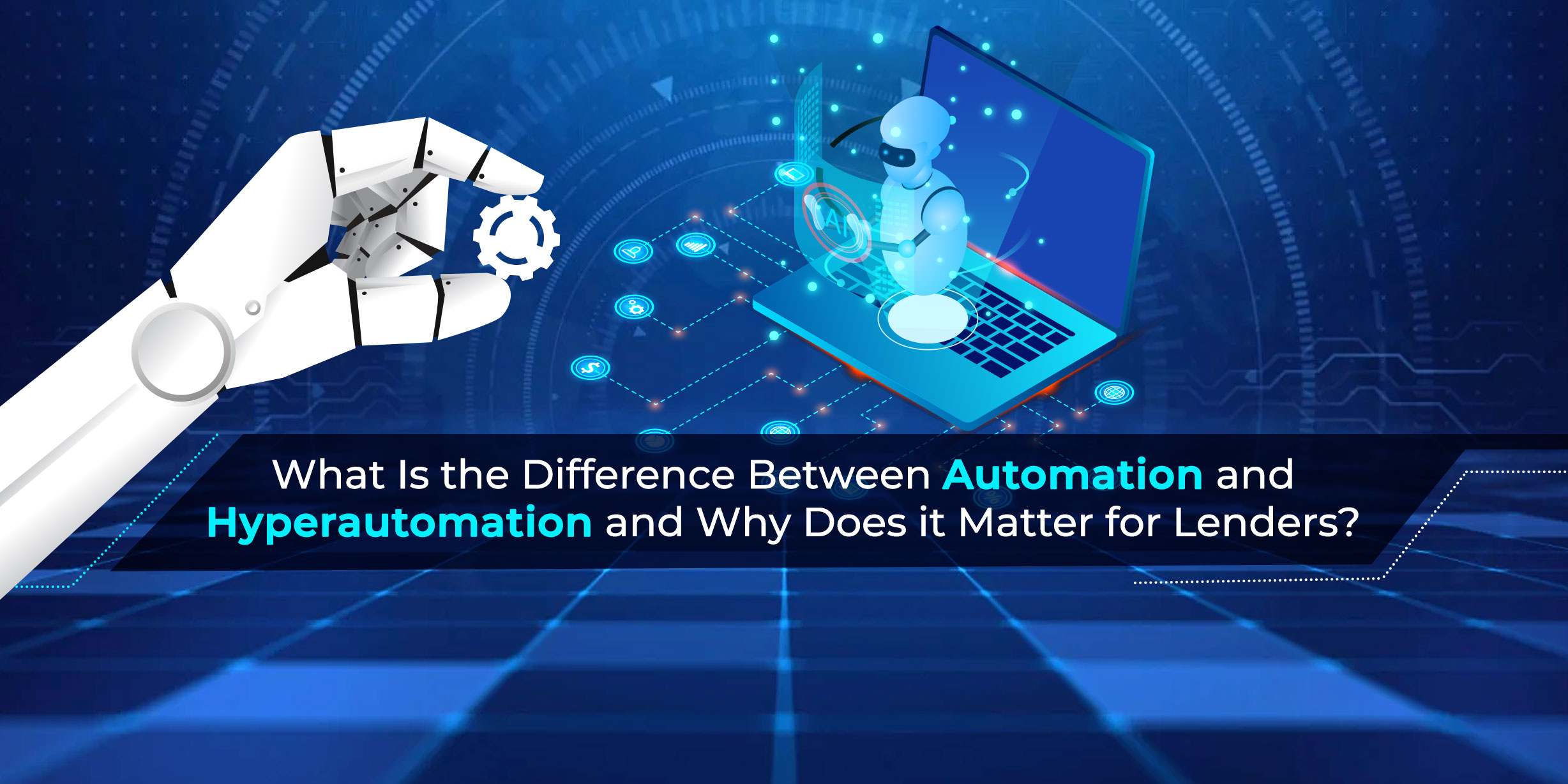As the industry increasingly digitizes its processes, hyperautomation is the next step in driving efficiency, preventing errors, and providing borrowers with a more seamless experience.
At a very basic level, automation removes the need for human effort when completing high-volume, iterative tasks. Instead, it relies on software robots or robotic process automation (RPA) bots. For instance, a bot may automatically copy data from one loan origination system (LOS) to another if certain conditions are met, or if an event triggers the data transfer.
However, there are a few drawbacks to this approach:
- Simple RPA bot-based automation cannot handle complex tasks with variability. For instance, if a new mortgage regulation calls for a slightly different process, you have to reconfigure the bot from scratch.
- It is usually incapable of handling exceptions. If it finds an error in a document, the bot will simply stall the process and not know how to reroute the workflow.
- It requires a lot of human effort to maintain RPA scripts and update them for ongoing use. It cannot learn human actions, which means that the same instructions have to be provided multiple times.
For these reasons (which translate into a higher cost of ownership for mortgage automation in the long term), the industry is now turning to hyperautomation. Unlike traditional automation or RPA, hyperautomation uses cognitive technologies to drive more adaptability and flexibility — making the system more “intelligent.”
What Is Hyperautomation in Mortgage?
The term hyperautomation was first coined by Gartner in 2019. Broadly, it refers to the use of automation in a manner that is more in line with business objectives, aided by cognitive technologies like artificial intelligence (AI) and machine learning. There are three traits that characterize hyperautomation:
- Non-technical user readiness – It requires less IT involvement and a business user (e.g., a loan origination officer) without technical skills can set up and use hyperautomation.
- Built-in intelligence – It can replicate human judgment and human effort more effectively in order to handle exceptions, learn from mistakes, and integrate with other tools.
- Business alignment – Hyperautomation is tailored for specific industry use cases and connects with the industry tools you may use as a mortgage provider.
Thanks to these traits, hyperautomation is more cost-effective, sustainable, and agile in the long term, although it may require some initial effort to set up a properly integrated hyperautomation landscape. Fortunately, it also relies on no-code/low code packaged solutions that are easy to install.
For mortgage providers, it means that you only need to select processes that are automation candidates, partner with a technology provider who has cognitive competencies and deploy a solution that is ready to use.
Key Differences Between Automation and Hyperautomation
Hyperautomation is distinct from traditional automation or RPA in the following ways:
It resembles human action more closely than RPA
The ultimate goal of mortgage automation is to bring human intervention down to a bare minimum so that there are fewer errors, greater standardization, and an optimized headcount. Hyperautomation leverages AI to mimic human action more closely — for example, if it detects an error or an issue with a file or dataset, it can connect with an assisting system or bring a human into the loop. The process does not stall just because there is an exception.
It approaches a mortgage process as part of the big picture
An RPA bot is purpose-built to complete one task at a time. A data entry bot can only extract information from a fixed source and transfer it to a fixed destination system. In contrast, hyperautomation is capable of large-scale integrations that approach each process as part of the bigger picture. As a result, hyperautomation operates via connected workflows and not through standalone bots.
It democratizes automation use and encourages wider adoption
Traditional automation is still largely a technical process, requiring heavy IT involvement. Mortgage businesses that are not already digitally mature or do not have access to a large IT team in-house could struggle with RPA upkeep in the long term. One answer to this is outsourcing RPA to a vendor — or, you could deploy hyperautomation, which is low code/no code in nature. Even business users can define workflows, set up integrations, specify exceptions, etc., and the entire team (even new employees) can start using hyperautomated processes right away.
Its goal is value addition and not just efficiency
At its core, RPA is meant to save you time, effort, and costs — but it cannot generate value. Hyperautomation, on the other hand, can open up new opportunities for a mortgage provider. For instance, you can set up a hyperautomation-enabled workflow that adapts to all new kinds of documents and regulations so that you can expand mortgage products into new regions.
How to Gain from Hyperautomation in 2022
Gartner predicts that spending on hyperautomation will continue to increase over the next few years, and by 2024, companies will be able to lower costs by 30% using this technology alongside process reimagination.
Already, the banking, financial services, and insurance (BFSI) sector are among the top three hyperautomation users in the world. To gain from this technology, organizations must begin with a strategic rethink, asking a fundamental question — how much of my process landscape can I automate? This has to be answered in a holistic manner, setting up the foundations of a connected and future-ready mortgage business that can easily embed new automation components as it scales.
Are you looking to adopt hyperautomation in 2022? At Nexval, our 1,000+ subject matter experts combine industry knowledge with the latest digital skills to provide end-to-end mortgage solutions. Talk to our Tech Gurus to get started on your hyperautomation journey, today.


